






TEFA program to begin in 2026-2027 school year
HOUSTON — Parents in Texas will have the opportunity to apply for state funds designed to give families more choices in their child’s education.
The Texas Education Freedom Account (TEFA) program will provide funds for private school tuition and other educational expenses for students in prekindergarten through 12th grade.
Parents must apply for TEFA funds to receive support for the 2026-2027 school year (the application period will be announced later by TEFA organizers).
TEFA funds can be used to pay for
See EDUCATION, page 5
BY NANCY WIECHEC Special to the Herald
While Thanksgiving is often celebrated as a season of gratitude, it might also be considered a season of patience — as friends and family arrive in droves, testing recipes and resolve alike. In that way, it’s a bit like an almond: from its first winter bud to its late-summer harvest, it takes time to mature.
One needs to understand the almond’s cycle to appreciate its appearance in Scripture, says Marc Turnage, a biblical scholar, author and travel guide. “God fulfills His word in spite of the circumstances or situations of life. He is patient and calls upon us to remain patient for His word to be accomplished,” Turnage said.
Similarly, the almond blossoms early and first, yet waits until the end of the
See RECIPE, page 3
KOREAN WAR POW AND FUTURE SAINT? The story of Venerable Father Emil Kapaun
SEE PAGE 15

Proclaiming the Good News to the Archdiocese of Galveston-Houston since 1964

BY JAMES RAMOS Texas Catholic Herald
HOUSTON (OSV News) — St. John Henry Newman — the 19th-century theologian, intellectual and preacher who journeyed from Anglicanism to Catholicism, powerfully shaping religious thought in both faith traditions — was named a doctor of the Church by Pope Leo XIV on Nov. 1.
The recent proclamation has given a boost of confidence and inspiration to Catholic campus ministry leaders and their efforts at secular universities around the Archdiocese.
“St. John Henry Newman’s idea of a university is one of the most formative texts for my understanding of campus
ministry,” said Doris Barrow III, campus minister at the Newman Center at Texas Southern University (TSU) in Houston. “He believed that education was not simply about acquiring information, but about forming the whole person — mind, heart and soul — in the pursuit of truth.”
St. Newman’s vision helped shape how Newman Center staff approach ministry at TSU, he said.
“Everything we do — celebrating the Sacraments, Bible studies, small groups, mentoring, service projects or student community gatherings — flows from St. Newman’s idea that “heart speaks to heart” (Cor ad cor loquitur),”
See DOCTOR, page 4

By Archbishop Joe S. Vásquez
Arzobispo Vásquez comparte su mensaje en línea en español. Visite www.archgh.org para leer su artículo en línea.
In this message, Archbishop Joe S. Vásquez reflects on gratitude and the Catholic understanding of gratefulness ahead of the Thanksgiving holiday.
GRATITUDE FOR THOSE WHO GUIDE US
All of us know of priests, bishops, religious sisters, family members or friends who have played an important role in our lives — those who inspired us, encouraged us, and stood with us in moments of joy and challenge.
I think back to priests who were significant in my own vocation, and later, as a bishop, the fraternity and support I received from Archbishop Joseph A. Fiorenza, Daniel Cardinal DiNardo and my brother bishops. They have been mentors to me, and for that, I am grateful.
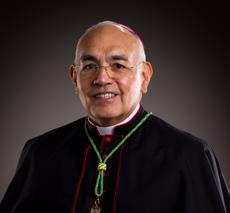
ARCHBISHOP
JOE S. VÁSQUEZ
But gratitude doesn’t stop there. Lay men and women have also shaped our faith. We come from families, and I am deeply thankful for my parents, grandparents, aunts and uncles, siblings and extended family. Family is the first school of faith, and it should always be a source of thanksgiving to God.
How do we express that gratitude? It can be as simple as a phone call, a personal visit, or even writing a note or letter. In our fast-paced digital world, we often rely on texts and instant messages, but taking time to write a letter is powerful. It says, “I thought about you, and you are important to me.”Those simple gestures matter. They remind us that gratitude is not just a feeling — it’s an action.
THE EUCHARIST: OUR GREATEST ACT OF THANKSGIVING
Gratitude is at the heart of who we are as Catholics. The greatest expression of thanksgiving is the celebration of the Eucharist. The very word “Eucharist” comes from the Greek word Eucharistia, meaning “thanksgiving.” It is an action. At Mass, we listen to God’s Word and are nourished by it. And then we offer back to God the simple gifts of bread and wine. Through Christ’s sacrifice, those gifts become His Body and Blood. What happened on Good
Friday is made present to us here and now. This is our act of thanksgiving.
We can never thank God enough for giving us His Son, who became one with us and now sustains us in the Eucharist. At every Mass, we are reminded: “It is truly right and just, our duty and our salvation, always and everywhere to give you thanks.”Those words matter. Thanksgiving is not reserved for good times only. It is constant — always and everywhere.
If anyone should understand the meaning of Thanksgiving, it’s Catholics. Every Mass is a celebration of gratitude.
GRATITUDE THAT LEADS TO SERVICE
Vatican II reminds us that the Eucharist is the source and summit of our faith. Everything we do should lead to the Eucharist, and everything after should flow from it. Gratitude expressed in the Eucharist should shape how we live — how we serve others, how we love, how we forgive. Thankfulness leads to service. When we receive the Body and Blood of Christ, it’s not just for us alone. There’s an expectation that we will be moved to serve others. If we fail to do that, we’ve missed the point.
Look at the saints. Their lives were rooted in the Eucharist, and that gratitude moved them to give everything for Christ and His people. Today, priests, religious sisters and lay leaders continue that witness. Their willingness to serve is a true expression of thanksgiving. It inspires me — and it should inspire us.
A MOMENT OF GRATITUDE IN AUSTIN
Installing Bishop Daniel E. Garcia as the sixth bishop of Austin was a beautiful experience. It allowed me to thank God and the Diocese of Austin for preparing me for my current role as archbishop of Galveston-Houston.
I’ve known Bishop Garcia for many years. He served as vicar general and moderator of the curia when I was the Bishop of Austin. I also had the privilege of ordaining him as a bishop. To install him as Austin’s new shepherd was a moment of great joy and continuity.
He brings a deep knowledge of the diocese and a pastor’s heart. I’m confident he will lead well and strengthen the faith in Central Texas. For me, it was a reminder that leadership in the Church is never about one person — it’s about the ongoing work of the Holy Spirit! †
HOUSTON — With the decision earlier this year by the U.S. Court of Appeals for the Fifth Circuit in Texas v. United States, which is likely to impact the lawful presence of people in the Deferred Action for Childhood Arrivals (DACA) program residing in Texas (and not any other state), the Catholic bishops of Texas issued this Nov. 4 statement:
“A federal court decision is imminently expected to change nearly 90,000 Texans’ presence in our country from lawful to unlawful. This decision will impact virtually every community in Texas by removing the lawful presence for DACA recipients who live in Texas. We, the Catholic bishops of Texas, firmly resolve to respond with compassion and a call for justice for those who, through no fault of their own, are now being forced to abandon their homes, their livelihood and their communities.
This action further undermines each of these persons’ basic human right to seek work and to support a family. It is contrary to the facts to claim that our state is harmed by DACA recipients lawfully working here. Instead, this kind of unprecedented and disruptive action by our government will harm our communities by fomenting fear, severing relationships, disrupting business and removing some of the most upstanding individuals from our community.
The present distress in our country regarding immigration is the result of decades of unwillingness on all sides to enact reasonable and meaningful immigration reform, reform which respects both national security needs and the human right of each person to work
and raise a family in peace. We will continue to work with people of goodwill to encourage compassionate outreach to those in dire predicaments and a humane reform of our terribly broken immigration system.
As we begin considering the anticipated implications of this ruling on our communities, including fear and familial estrangement, we respectfully remind federal and state authorities of the importance of proper training and supervision for ICE agents. No violent actions should ever be taken or justified to harm law enforcement officials or their families. The human dignity of law enforcement officers themselves is violated when they are expected to consider brutal and inhumane methods to enforce these decisions. The unreasonableness and impending implementation of the Fifth Circuit’s ruling, targeting law-abiding people working and living in Texas, places a terrible burden on our communities. We are pastors of ICE agents and DACA recipients, undocumented persons and families whose security is threatened. This decision will only exacerbate fear and distrust, pit community members against one another, and cause significant economic disruption for many communities.
We want to say unequivocally to all our immigrant sisters and brothers, and in a particular way to those who arrived as children: We have heard your cries. We are with you in these difficult days. May God, who hears the cry of the poor, move all of us to bring his mercy and justice to our country.”
For more on the current status of DACA in relation to Texas v. United States, see usccb.org/DACAupdate or for Spanish, usccb. org/actualizacionDACA. †
PUBLISHING SINCE 1964 (USPS 936-480)
EDITORIAL
tch@archgh.org • archgh.org/tch 713-652-8215 • Fax: 713-659-3444
CIRCULATION
tdieli@archgh.org • 713-652-4444
ADVERTISING ads@archgh.org • 713-652-4407
Archbishop Joe S. Vásquez President & Publisher
Jonah Dycus
Communications Director & Executive Editor
Rebecca Torrellas
Managing Editor
James Ramos
Content Editor
Catherine Viola
Advertising Manager
Kerry McGuire, Elizabeth Morales and Nancy Wiechec
Contributors
The Texas Catholic Herald is published semi-monthly on Tuesdays, with one issue in June, July and August, by The Texas Catholic Herald Publishing Co., Inc., 1700 San Jacinto St., Houston, TX 77002. Periodical postage paid at Houston, TX and other distribution points.
Postmaster: Send address changes to P.O. Box 907, Houston, TX 77001
Subscription rate: $15 per year; $20 outside Texas; $35 out of U.S.

A member of The Catholic Media Association
TCH PUBLISHING SCHEDULE
Issue date: November 25
Deadline: Noon on November 4
Issue date: December 9
Deadline: Noon on November 18
Editorial deadlines are no later than Tuesday at noon, 21 days prior to the

growing season to bring forth fruit.
The prophet Jeremiah says he saw a branch of the almond tree when the word of the Lord came to him. The Lord said to Jeremiah, “You have seen well, for I am watching over my word to carry it out” (Jer 1:11-12).
In Hebrew Scripture, the passages use an alliterative play on words. “Shaqed” is the Hebrew word for almond tree, while the verb for watching is “shoqed.” The New American Bible, Revised Edition, notes that because the almond tree blooms in late winter, it is called “the watcher” for the coming spring. God is a watcher by observing the fulfillment of His word.
The almond also represents divine favor because of the miracle of Aaron’s staff described in Numbers (17:23). “By Aaron’s rod, sprouting, blossoming and bearing almonds in one night, God definitively demonstrated to the Israelites that Moses and Aaron were His chosen, appointed servants,”Turnage notes.
Other indications of the almond’s regard come from Genesis where they are mentioned alongside pistachios as the “land’s best products” (Gen 43:11) and from Exodus when God prescribes the cups of the menorah to be shaped like almond blossoms (Ex 25:33-34, 37:20).
Although almond doesn’t appear in New Testament texts, its white and pink flowers and its shape show up in Christian art as symbols of the resurrection, divinity and purity.
We refer to the almond as a nut, but it’s a drupe — a fruit akin to a peach, plum or cherry. The kernel

inside the shell is the part we eat. The shell is covered by a green fuzzy outer hull that dries and cracks open before harvest. This shedding process, which brings forth the potential of new life, may be why the almond stands to represent resurrection.
Almonds are not native to America. Like figs, they were brought to California by Spanish missionaries. Today, California is the top almond producer, growing about 80% of the world’s supply.
In this easy 20-minute (plus cooling time) recipe, the almond is the star. A touch of honey and a Middle Eastern spice blend called za’atar complement the nutlike kernel with sweet, herbal and citrus notes.
Serve these as a homemade addition to any cheese and fruit platter, sprinkle them over a spinach salad, or simply enjoy them as a snack while catching up with relatives — even the ones who might drive us, well, nuts. †
• 2 tablespoons olive oil
• 3 tablespoons honey
• 2 tablespoons za’atar (see note)
• 1 teaspoon fine sea salt
• zest from one lemon
• 2 cups shelled, whole raw almonds
1. Heat the oven to 350°F. Line a rimmed baking sheet with parchment paper.
2. In a large bowl, whisk together the first five ingredients and then mix in the almonds until they are evenly coated. Spread the mixture in a single layer on the prepared baking sheet.
Time: 20 minutes plus cooling

3. Bake 10 to 15 minutes until nuts are fragrant and golden. Give the nuts a stir halfway through roasting.
4. Remove pan from the oven and let cool for 10 minutes.
5. Using two forks, separate almonds that are stuck together. Let almonds cool completely before serving or storing.
6. Store in an airtight container at room temperature for up to a week.
Note: Za’atar spices can be found in Middle Eastern markets, most major grocery stores and online. You can make your own by mixing together 1 teaspoon salt with 1 tablespoon each of dried thyme, ground coriander seed, sumac, ground cumin and whole toasted sesame seeds.

Save some trees and get the Texas Catholic Herald sent straight to your inbox with The Digest, our free email newsletter. For free features, exclusive content and more, sign up at WWW.ARCHGH.ORG/TCHDIGEST. Want to go paperless?
Effective Oct. 1
Father Honest Munishi, C.S.Sp.
Parochial Vicar - Holy Ghost, Houston
Effective Oct. 27
Father Ricardo Teixeira, S.C.J.
Parochial Vicar - Our Lady of Guadalupe, Houston
HOUSTON — The Office for Young Adult and Campus Ministry will host the next Café Catholica Lite at St. Thomas Aquinas, located at 12627 W Bellfort Ave. in Sugar Land, on Thursday, Nov. 20, from 7 to 8:45 p.m.
The talk titled “The Sheer Joy of Evangelizing: How to Win Souls Without Losing Yours” will be given by Michael Gormley, mission evangelist with Paradisus Dei. The talk will explore practical ways to share the Gospel with others while staying rooted in prayer, peace and a balanced spiritual life. The night will include snacks, the presentation, Q&A and prayer.
The Café Catholica program helps young adults ages 18 to 39 encounter Christ and His Church. For more information, contact the Office for Young Adult and Campus Ministry at yacm@archgh.org or 713-741-8778 or visit www. archgh.org/cafecatholica. †

St. Charbel Mass to be held Nov. 22
HOUSTON — For the first time in the Archdiocese, there will be an encounter of Catholics from Eastern and Western traditions to celebrate the life and legacy of St. Charbel Mahklouf, the first Maronite saint inscribed on the Latin-rite calendar.
The Mass is set for 10:30 a.m. Nov. 22 at the Co-Cathedral of the Sacred Heart, 1111 St. Joseph Pkwy., on Nov. 22 and will also feature relics of St. Charbel from the Our Lady of Mt. Lebanon - St. Peter Maronite Cathedral in Los Angeles.
Bishop Elias Zaidan of the Eparchy of Our Lady of Lebanon of Los Angeles, one of two U.S. eparchies, will be the principal celebrant of the Maronite Liturgy. Father Jeffrey Bame, rector of the co-cathedral, will concelebrate the Mass. †

In Memoria set for Nov. 23
HOUSTON — On Sunday, Nov. 23, at 3 p.m., the Archdiocesan Choir will perform its 16th annual In Memoria concert at the Co-Cathedral of the Sacred Heart.

$25 tickets, with discounted prices for seniors and students, are available for purchase online at www.archgh. org/in-memoria.
Priests and religious sisters and brothers who served in the Archdiocese of Galveston-Houston and died in the past year will be remembered during the performance. The evening will conclude with a moving homage to Pope Francis, who died on April 21. †
Downtown Co-Cathedral celebrates 15 years of landmark organ’s music with anniversary concert. ▪ SEE PAGE 9
he said.“We create spaces where students can encounter God through authentic relationships and thoughtful and intentional dialogue.”
Born in London, St. Newman (18011890) studied at Oxford’s Trinity College from 1816 to 1822, later co-founding the reformist Oxford Movement while serving as vicar of St. Mary the Virgin’s university church.
After quitting his posts to become a Catholic in 1845, he founded a church and community at nearby Littlemore, creating a vast output of works that have made him one of the Christian world’s most studied figures.
Made a cardinal in 1879 by Pope Leo XIII, St. Newman became the first English non-martyr saint for six centuries when canonized in October 2019, and has given his name to numerous schools and colleges, as well as an oratory and university in Birmingham, where he lived in later life.
Students at the University of Pennsylvania founded a Newman Club in 1893 to support Catholic enrichment on campus, naming the organization after Cardinal Newman.
Since then, Catholics at university and college campuses around the country have formed ministries inspired by their efforts and St. Newman to offer supportive Catholic communities to students, including in the Archdiocese, such as at the University of Houston, Texas Southern, Rice and Sam Houston State universities, among others.
These communities “embody St. Newman’s vision that one can fully engage in modern intellectual life while remaining a faithful Catholic,” according to Father Tucker Redding, SJ, director of campus ministries and chaplain at St. Mary’s Chapel and Rice Catholic Student Center.
“This is especially important at secular universities, where students may feel like these are conflicting values,” he said. “Newman Centers provide a home for faithful Catholics engaged in the intellectual life and also witness to other students, faculty, and staff that they can engage in religion and relationship with God while remaining faithful intellectuals.”
Ministering at TSU’s Newman Center, which was founded in 1967, Barrow agreed.
“St. Newman’s teaching on conscience
Investing in companies that align with the Moral and Social teachings of the Catholic Church, upholding the Sanctity of Life and the Traditional Family.
• Locally owned and based in Houston, TX
• Serving Houstonians for over 25 years with spiritually based, sophisticated investment strategies
• We seek businesses that respect life from conception, advance ethical research, and support faith-centered family values
“Stewarding
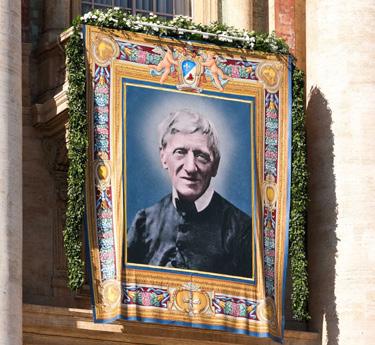
CNS PHOTO/LOLA GOMEZ
A tapestry of St. John Henry Newman hangs from the facade of St. Peter’s Basilica at the Vatican Nov. 1 during the Mass in which Pope Leo XIV declared the 19th-century English cardinal and theologian a doctor of the Church.
also plays a key role. He called conscience ‘the aboriginal Vicar of Christ,’ meaning that God speaks personally within each soul,” he said. “In our mentoring and leadership formation, I encourage students to cultivate that inner dialogue — to see faith and reason not as opposites, or incompatible, but as in relationship with each other. He teaches that holiness can be found in the ordinary rhythm of academic life — in study, conversation, service and perseverance. That’s the message I try to live and pass on here at TSU.”
For Mary Impelman, campus minister working alongside Father Redding in reaching students at Rice, she first encountered St. Newman while giving a presentation as part of the Cenacle Sisters’ Spiritual Direction Institute.
“At the time, his life spoke to me as he was a convert to the Catholic faith who came to recognize our fullness of truth through academic study,” she said. “More recently, while working as a campus minister at Rice University, I have come to appreciate the role he played in the development of campus ministry centers like ours.”
CAMPUS MINISTRY MEETS
CAMPUS LEADERSHIP
Both campus ministries at Rice and TSU recently welcomed and met their respective university presidents.
The TSU Newman Center welcomed TSU President James W. Crawford III to an Aug. 20 Mass celebrated by Auxiliary Bishop Italo Dell’Oro, CRS, which was also attended by students, faculty and alumni.
On Sept. 21, Rice students attended a Mass with Reggie DesRoches, Rice’s president, at St. Mary’s Chapel, followed by a reception at their house. During an address, President DesRoches reflected on the values that he and his wife Paula have due to their Catholic faith and formation in Catholic schools.
He also shared that although Rice is a secular university, many of its core values are in line with those same values that he received in Catholic formation.
The recent naming had been supported by the U.S. Conference of Catholic Bishops, who at their November
2023 plenary assembly voted almost unanimously to support a request by the Catholic Bishops’ Conference of England and Wales that St. Newman be named a doctor of the Church by Pope Francis.
HOW ARE DOCTORS OF THE CHURCH CHOSEN? A GLANCE AT THE PROCESS
When Pope Leo XIV proclaimed St. John Henry Newman the newest doctor of the Church on the feast of All Saints, the 38th in history and the first named under his pontificate, the British saint joined an esteemed list of others who were named doctors of the Church.
The title “doctor,” meaning “teacher” in Latin, is reserved for saints whose writings and holiness have profoundly shaped Catholic teaching. Father John Flader, an American priest long based in Australia, said that three criteria must be met: The saint must be eminent in doctrine, outstanding in holiness and formally declared a doctor by the pope.
Notably, St. Newman’s Anglican writings aren’t considered in the evaluation — only his Catholic works.
St. Ambrose, St. Augustine, St. Gregory the Great and St. Jerome were the first four doctors of the Church. Up until Nov. 1, there have been 37 saints so named — including four women, St. Teresa of Avila, St. Catherine of Siena, St. Thérèse of Lisieux and St. Hildegard of Bingen.
The most recent saints to be declared doctors were St. Thérèse of Lisieux by St. John Paul II in 1997, Sts. John of Avila and Hildegard by Pope Benedict XVI in 2012, and Sts. Gregory of Narek and Irenaeus of Lyon by Pope Francis in 2022.
A JOURNEY OF A SAINT
St. Newman’s spiritual journey began with evangelical roots, deepened at Oxford, where he pursued Anglican ministry, and ultimately led him to Catholicism. His pastoral work and theological study, especially of the Church Fathers, sparked national attention and inspired the Oxford Movement, which sought to renew the Church of England.
Newman’s differing views on doctrine from the Church of England led to his departure and exile from Oxford and eventual conversion to Catholicism in 1845, a decision that cost him his fellowship, friendships and family ties.
Despite the loss, he found peace and purpose, becoming a Catholic priest and founding the Birmingham Oratory. He later served as rector of the Catholic University of Ireland. Newman’s writings, including the Apologia and Grammar of Assent, defended his faith and influenced both Anglican and Catholic thought. In 1879, Pope Leo XIII named him a cardinal. Newman’s legacy endures as a bridge between faith and reason, and a model of intellectual and spiritual integrity.
In Birmingham, Cardinal Newman continued to write, pondering in one of his final works that God “has provided for the creation of the saint out of the sinner ... He enters into the heart of man, and persuades it, and prevails with it, while He changes it.”
Cardinal Newman died at age 89 in 1890 and was canonized in 2019 by Pope Francis. †
private school tuition, homeschool curriculum, tutoring, therapies, school lunch, transportation, school uniforms, technology (limited to 10% of funds received) and more.
Most accounts will be funded between $10,500 and $12,500 per year per student. Students with disabilities could receive up to $30,000 per year. The state of Texas has designated $1 billion in funding to assist families in these expenses.
“We are thrilled about the opportunity the Texas Education Freedom Accounts (TEFA), formerly Education Savings Accounts, initiative presents to further our mission of forming disciples in faith and intellect, both accessible and affordable to more families in our communities,” said Mazie McCoy, Ed.D., superintendent of Catholic Schools.
All families are encouraged to apply, as funds are limited and will be awarded based on a lottery system within income categories. Priority will be given to students with disabilities and those from low-income households.
There are four categories of prioritization for receiving funds:
1. Students with a disability (defined by Texas Educ. Code sec. 29.003) whose family income is at or below 500% of the Federal Poverty Guidelines (FPG).
2. Children whose family income is at or below 200% of the FPG.
3. Children whose family income is between 201% and 500% of the FPG.
4. Everyone else, depending upon available funds. Students who move from public schools will be prioritized








over currently enrolled private school students in this category only.
TEFA funds will be made available to families through transfers on the first day of months of July, October, and the remainder before April. Any funds remaining in a participating child’s account will be carried over to future years. Funds in the account are not considered taxable income unless otherwise defined by federal or another state’s law. Should a child enroll in a private school program after the beginning of the school year, the amounts transferred are prorated.
Parents whose children have been awarded a TEFA must agree to spend the funds received only on eligible purchases and cannot resell items. Parents also agree to share the child’s assessment results with the program administrator and notify the program administrator within 30 days of their child enrolling in public school, graduating from high school, or otherwise becoming ineligible to enroll in public school.
To access TEFA information on the Archdiocese of Galveston-Houston Catholic Schools website, or to sign up for weekly updates on TEFA, visit ChooseCatholicSchools.org/tefa. †

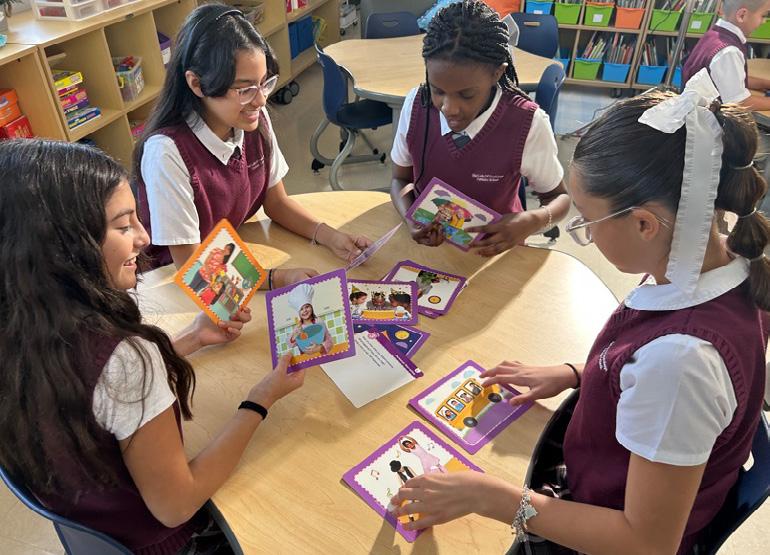



November 15 - 12:00PM th


HOUSTON — Since 2016, the Catholic Church has observed the World Day of the Poor on the 33rd Sunday of Ordinary Time as a way for Catholics to reflect more deeply on our call to love the poor as our brothers and sisters.
On Nov. 15 to 16, parishes in the Archdiocese and in many dioceses throughout the U.S. will be able to observe this year’s World Day of the Poor by taking a collection for the Catholic Campaign for Human Development (CCHD), the domestic anti-poverty initiative of the U.S. Conference of Catholic Bishops (USCCB).
“Jesus reminds us that faith, even as small as a mustard seed, holds within it the power to transform the world. From something seemingly insignificant can grow a tree that offers shelter, hope and new life. In many ways, that is the story of the CCHD, founded by the bishops of the U.S. in 1969. Through CCHD, the Church lives out the Gospel call to solidarity, fostering the capacity of people experiencing poverty to work together to confront the roots of injustice and build stronger, more just communities,” said Bishop Timothy Senior of Harrisburg, chairman of the bishops’ Subcommittee on the CCHD. “This same spirit of faith takes root in our own communities, where 25% of every CCHD collection stays within the diocese. These funds support local efforts that uplift our neighbors, strengthen families and help
“Through CCHD, the Church lives out the Gospel call to solidarity, fostering the capacity of people experiencing poverty to work together to confront the roots of injustice and build stronger, more just communities.”
BISHOP TIMOTHY SENIOR
USCCB CCHD Subcommittee Chair and Bishop of Diocese of Harrisburg
build a future of hope.”
CCHD provides crucial support to both growing and longstanding organizations that promote justice, neighborhood improvement, and job creation for marginalized groups in both urban and rural communities across the U.S.
For more than 50 years, CCHD has funded organizations that empower lowincome individuals in Houston and other communities to make positive changes through education, training and building networks of solidarity. Working together,
members of CCHD-funded groups share knowledge and diverse experiences, enabling them to engage effectively with faith leaders, businesses and political officials to address the needs and concerns of low-income communities.
While CCHD grant recipients include nonsectarian, ecumenical and interreligious organizations, all must abide by Catholic moral teaching, including respect for human life from conception until natural death and prioritizing the concerns of the poor.
In 2024, the bishops awarded $2.24 million in grants.
“World Day of the Poor is an invitation for us to pray and to act, to build a world that truly recognizes the God-given dignity of our brothers and sisters who are most vulnerable,” Bishop Senior said. “One concrete way to respond to this call is by participating in the collection for the CCHD. I invite you to remember the Lord’s words about the mustard seed: even the smallest act of faith can, through the grace of the Holy Spirit, grow into something that transforms lives and renews communities, both across our nation and within your own diocese.”
This year marks the 10th anniversary of the encyclical Laudato Si’, in which Pope Francis wrote “just how inseparable the bond is between concern for nature, justice for the poor, commitment to society and interior peace” (no. 10). The CCHD shares this vision by supporting
The Catholic Campaign for Human Development is the national anti-poverty program of the U.S. bishops, working to carry out the mission of Jesus Christ “to bring glad tidings to the poor ... liberty to captives ... sight to the blind, and let the oppressed go free.” (Lk 4:18)
Want to support the Catholic Campaign for Human Development’s local antipoverty efforts online? Visit www.archgh.org/second-collections and give virtually to CCHD.
organizations that bring together people from low-income communities and equip them to advocate for policies that fight pollution, protect the environment and secure justice for their own and other marginalized communities.
Support for CCHD helps community organizing and economic development organizations achieve results that make a positive difference in the lives of lowincome people in Houston and in cities, towns and rural areas across the country. Some dioceses take the collection on a date.
For more information about CCHD, visit www.usccb.org/cchd. †










When was the last time you went to confession? Has it been a while? The Sacrament of Penance, also known as reconciliation or confession, may seem intimidating for many, but, especially during the Jubilee Year, it can be a peaceful healing encounter with Christ and His Church. Take this guide with you to confession as a way of reflection and rediscover the Sacrament of Penance.
Reconciliation is a Sacrament instituted by Jesus Christ in His love and mercy to offer sinners forgiveness for offenses committed against God. At the same time, sinners reconcile with the Church because it is also wounded by our sins.
Every time we sin, we hurt ourselves, other people and God. In Reconciliation, we acknowledge our sins before God and His Church. We express our sorrow in a meaningful way, receive the forgiveness of Christ and His Church, make reparation for what we have done, and resolve to do better in the future.
THE FOUR PARTS OF CONFESSION

• CONTRITION: A sincere sorrow for having offended God, and the most important act of the penitent. There can be no forgiveness of sin if we do not have sorrow and a firm resolve not to repeat our sin.
• CONFESSION: Confronting our sins in a profound way to God by speaking about them — aloud — to the priest.
• PENANCE: An important part of our healing is the “penance” the priest imposes in reparation for our sins.
• ABSOLUTION: The priest says the words by which “God, the Father of Mercies” reconciles a sinner to Himself through the merits of the Cross.
Adapted from an Examination of Conscience based on the Ten Commandments Take a moment to reflect on how sin has damaged your relationships.
▪ Have I treated people, events, or things as more important than God?
▪ Have my words, actively or passively, put down God, the Church, or people?
▪ Do I ‘keep Holy the Sabbath’? Do I go to Mass every Sunday (or Saturday Vigil) and on Holy Days of Obligation, as is possible? Do I avoid, when possible, work that impedes worship to God, joy for the Lord’s Day, and proper relaxation of mind and body? Do I look for ways to spend time with family or in service on Sunday?
▪ Do I show my parents and family due respect? Do I seek to maintain good communication where possible? Do I criticize them for lacking skills I think they should have?
▪ Have I harmed another through physical, verbal, or emotional means, including gossip or manipulation of any kind?
▪ Have I respected the physical and sexual dignity of others and of myself?
▪ Have I taken or wasted time or resources that belonged to another?
▪ How do I protect and care for God’s creation, including my family, the environment and those around me?
▪ If it has been a while, let the priest know and he can help guide you through the steps for a good confession.
1. Priest gives a blessing or greeting.
2. Make the Sign of the Cross and say, “Bless me, Father, for I have sinned. My last confession was [length of time] ago.”
3. Confess all of your sins to the priest. If you are unsure or uneasy, tell him and ask for help.
4. Say, “I am sorry for these and all of my sins.”
5. The priest gives a penance and offers advice to help you be a better Catholic.
6. Say an Act of Contrition, expressing your sorrow for your sins. The priest, acting in the person of Christ, then absolves you from your sins.
O my God, I am heartily sorry for having offended You, and I detest all my sins because of Your just punishments, but most of all because they offend You, my God, Who are all good and deserving of all my love. I firmly resolve, with the help of Your grace, to sin no more and to avoid the near occasions of sin. Amen.

From December 16–24, Magnificat Houses will bring music, prayer, and hospitality to neighbors across Houston. Every evening reminds us that compassion opens doors, and no one should be left out in the cold. Your sponsorship gives safe shelter, warm meals, and dignity to those who need it most this Christmas. Scan for more information
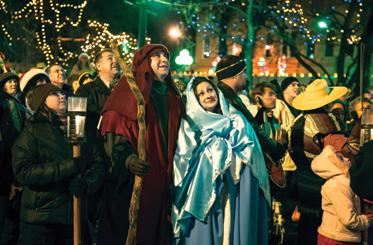
www.mhihouston.org development@mhihouston.org
visit our newly remodeled store. You can also order by phone, email or online 713-659-4709 or sacco@saccos.com

• Visit the two Archdiocesan Pilgrim Sites - Co-Cathedral of the Sacred Heart, Downtown Houston - St. Mary Cathedral Basilica, Galveston Island • Find Jubilee pilgrim site guides, news, indulgence information, news updates, resources and more online
BY KERRY MCGUIRE Herald Correspondent
HOUSTON — Generosity is one of the most visible signs of faith in action. Within the Archdiocese, that spirit continues to strengthen parishes, schools and ministries that serve those most in need. Each act of giving, whether through time, prayer or financial support, builds a community rooted in gratitude and united in Christ.
Through the Diocesan Services Fund (DSF), the faithful united to sustain more than 60 ministries and programs that bring Christ’s compassion to others.
We received part of that aid, and I remain grateful to the parishes whose generosity made that possible through the fund.”
Reflecting on God’s blessings, both material and spiritual, Father Ramirez recalled Jesus’ teaching that “to those who have more, more will be given.” He said this remains the Church’s mission today: to discern where the greatest needs exist and to care for those who depend on its help.


Among these efforts is the Aid to Poor Parishes Fund, established in 1968 by Bishop John L. Morkovsky to provide consistent support to parishes and schools facing financial hardship. He asked then-Father Joseph A. Fiorenza, who would later become archbishop, and a committee of priests and lay leaders to develop a program that would help ensure struggling communities could continue their mission.
Over time, the fund has grown through parish tithing and the DSF rebate process. When a parish exceeds its DSF goal, a portion of those rebate dollars is directed to the fund, which the Archdiocese uses to provide grants for essential building, maintenance and ministry needs. This financial assistance allows parishes and schools to continue valuable ministry programs for children and adults, address property and building repairs, and maintain safe, welcoming spaces where parish life and worship can prosper.
In 2024, the Aid to Poor Parishes Fund distributed more than $1.8 million in grants to over 50 parishes and schools across the Archdiocese, providing critical support for facility improvements,
ministry programs and maintenance needs. Contributions to the Aid to Poor Parishes Fund through the DSF reflect the faithful’s deep commitment to fostering community and spiritual growth. Through this shared stewardship, smaller parishes facing hardship can meet the pastoral and sacramental needs of their people.
For Father Nicolas Ramirez, pastor of Sacred Heart Catholic Church in Conroe, one of the blessings of being a diocesan priest is experiencing a variety of parish communities throughout the Archdiocese, since priests are often reassigned based on pastoral need. He said his last assignment as a pastor was at St. Frances Cabrini Parish in Houston, which benefited from the Aid to Poor Parishes Fund, an experience that deeply inspired him.
“At my previous parish, [we] needed funding for basic capital repairs, including a new roof and other safety improvements,” said Father Ramirez. “I wrote to the bishop requesting consideration for those funds, and his response was affirmative.
“Jesus also said, you will always have the poor with you, but that doesn’t mean we stop serving their needs just because poverty persists,” said Father Ramirez. “We must continue Christ’s mission of serving the poor both materially and spiritually.”
Now serving a larger, financially stable parish, Father Ramirez remains committed to that same mission of generosity. Beyond the parish’s regular DSF contribution, he invited the finance council to allocate part of the annual rebate to support other communities that may not meet their goals.
“I feel a deep responsibility to help,” said Father Ramirez. “We have plenty of needs here as well, but we’re in a position to assist parishes that are more impoverished.”
By choosing to act, Sacred Heart has stepped forward in generosity, embracing sharing its blessings and exceeding what is merely required to address the needs of others.
Father Ramirez said he hopes more pastors will become aware of the Aid to Poor Parishes Fund and seek help when their parishes are in need. He believes greater awareness will lead to stronger collaboration within the local Church, ensuring that no community feels alone in its challenges.
“I’ve seen the value of this program firsthand, and that support allowed my former parish to meet critical needs at the time,” said Father Ramirez. “These are the same needs that many other parishes face. It is important to make sure other pastors know this aid is available, because while funds are limited, very few are even aware they can request this kind of help.”
Father Ramirez said that true generosity is not only about sharing financial resources but also about

The 2025 Diocesan Services Fund theme is “Cry Out with Joy to the Lord.” DSF operates in the Archdiocese of Galveston-Houston each year to help the Church carry out the ministries of teaching and sanctifying. DSF brings the needed financial resources to carry out 64 ministries.
This video series brings to life the ministry featured in this story. Hear from people personally impacted by God’s grace through these DSF ministries.

SCAN TO WATCH OR VISIT ARCHGH.ORG/ DSF-IN-ACTION
recognizing the interconnectedness of every parish community. When one parish flourishes, others are strengthened in turn, creating a ripple effect of faith and hope throughout the Archdiocese.
“Jesus identifies His people with Himself, which reminds us of our duty to care for the whole Body of Christ,” said Father Ramirez. “To think we can focus only on the needs of our own parish is short-sighted. When one member suffers, the whole body feels that suffering, and we are called to respond.”
To support the Aid to Poor Parishes Fund by donating to the 2025 Annual DSF Appeal, visit archgh.org/dsf.
Every dollar given to the DSF directly supports vital ministries that provide education and formation opportunities and deliver much-needed direct service across the Archdiocese. †


BY JAMES RAMOS Texas Catholic Herald
HOUSTON — The Co-Cathedral of the Sacred Heart will mark the 15th anniversary of its pipe organ with a free concert on Nov. 16, celebrating an instrument that has shaped worship and inspired thousands since its dedication by Daniel Cardinal DiNardo in 2010.
Installed as Martin Pasi’s Opus 19, the organ has accompanied nearly every weekend Mass in English, Spanish and Vietnamese, as well as major Archdiocesan Liturgies. For Crista Miller, DMA, director of music at the co-cathedral, the milestone is a chance to reflect on its spiritual and cultural impact.
“We take as our guide the Vatican II instruction Musicam Sacram : ‘The pipe organ is to be held in high esteem in the Latin Church,’” Miller said. “Cathedrals are called to be a model for Liturgy because they mark important and meaningful centers of interaction with God and each other. On a birthday, it’s good to pause and reflect on how sacred music shapes our lives.”
The organ has elevated countless Liturgies, from episcopal installations and ordinations to funerals for Bishop Vincent M. Rizzotto and Archbishop Joseph A. Fiorenza. Miller recalls one unforgettable moment: a spontaneous Mass for striking janitors in 2012.
“Archbishop Fiorenza wanted them to rest [at the co-cathedral] and hear some organ music before Mass,” she said. “He ended with cheers of ‘Viva los janitors!’ and then, amazingly, ‘Viva la organista!’ How could one not offer one’s best music under those circumstances?”
Beyond Liturgy, the organ has anchored a vibrant concert series, hosting artists from five continents and more than 30 U.S. states. Highlights include a 22-
ANNIVERSARY ORGAN GALA RECITAL
Sunday, Nov. 16 at 3 p.m.
Co-Cathedral of the Sacred Heart 1111 St. Joseph Pkwy., Houston Register: www.bit.ly/Pasi15thAnnivTickets
ABOUT THE PASI OPUS 19 ORGAN
Set against the striking 40-foot Resurrection stained-glass window, Martin Pasi’s Opus 19 is his largest four-manual organ, with 76 stops and 5,499 pipes, with the tallest reaching 32 feet.
Crafted in white oak with gold leaf accents, the organ blends historic European tonal traditions with modern innovations like NovelOrg electric action to serve worship and inspire artistry.
The anniversary concert kicks off a full year of programming around the organ’s birthday.
hour J.S. Bach marathon and performances by over 25 visiting choirs. The First Friday Series has provided opportunities for students from Rice University, the University of Houston and other institutions, extending the organ’s reach into education.
The instrument’s influence has even reached other Catholic institutions. Organ builder Martin Pasi has since constructed major instruments for a seminary in Cincinnati and St. John’s University in Minnesota, where his workshop now trains students and monks in organ building under the name Abbey Organ Builders.
Miller said the co-cathedral’s organ continues to draw interest because of its beauty and complexity. “The organ is a marvel of physics, engineering, architecture and art,” she said. “It appeals to nearly everyone, and its sound can lift hearts and minds to God.”
The anniversary concert will feature acclaimed organist Amanda Mole performing works by Bach, Jehan Alain and Max Reger. Mole said she is especially excited to play one of Reger’s monumental chorale fantasias.
“His compositions push the organ and organist to the limits of what is possible,” Mole said. “To be able to share this work on an instrument that plays Reger so well is thrilling.”
Mole added that the program is designed to help listeners prepare for the penitential season of Advent. “I invite listeners to prepare for this season when listening to the concert,” she said.
The Nov. 16 concert is free and begins at 3 p.m., with donations encouraged to support the organ and concert series. Advance registration is required at bit. ly/Pasi15thAnnivTickets. †
Upcoming events include:
• First Friday Recital Series: Monthly following 12:10 p.m. Mass.
• Adoration by Candlelight: Meditative organ music monthly with Eucharistic adoration
• Nov. 27, Thanksgiving Day: Special Liturgy marking 50 years since the end of the Vietnam War.
• Christmas Season: Lessons and Carols (Dec. 16) and annual Christmas Concert (Dec. 17) featuring Bach’s Magnificat and festive hymns for organ and brass.
• Jan. 7, 2026: Louis Vierne’s Mass Solemnelle with Armonia choir.
• Feb. 25, 2026: Annual high school choral invitational.
For full details and ways to support the program, visit www.sacredhearthouston.org/ music-2.





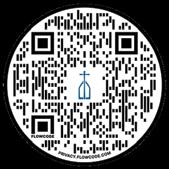




Archbishop Miller stresses importance of Catholic education at ‘A Pattern of Hope’
HOUSTON — More than 150 people attended the fourth annual “A Pattern of Hope” luncheon held Oct. 24 at the Junior League of Houston.
Speakers at the event included
Archbishop Emeritus J. Michael Miller, CSB, who recently retired from leading the Archdiocese of Vancouver for more than 16 years, and Mazie McCoy, Ed.D., Archdiocesan superintendent of Catholic Schools.
McCoy provided current information on Archdiocesan schools and efforts to promote Texas Education Freedom Accounts.
Archbishop Miller provided a inspiring presentation on the importance of Catholic schools.
Proceeds from the event support Catholic schools in the Archdiocese. †
ACCW calls for SIM cards, essentials in Christmas drive for seafarers
GALVESTON — The Archdiocesan Council of Catholic Women (ACCW), in collaboration with the Houston International Seafarers Center and the Stella Maris port ministries of the Archdiocese, is collecting supplies to benefit seafarers reaching ports in the Archdiocese.
In 2024, more than 10,000 Christmas boxes — made from shoeboxes or clear plastic containers — from some 164 different organizations were distributed to people from 51 countries working and living at sea across 412 different seagoing vessels.
The boxes, wrapped in festive paper, are filled with essential items, treats and small gifts. Chaplains, ship visitors and staff hand-deliver them to ships during the Christmas season. Annually, the ACCW coordinates the large supply drives, which this year culminate with a Dec. 12 Mass, celebrated by Auxiliary Bishop Dell’Oro, CRS, at 9:30 a.m., followed by a luncheon. The event gathers boxes and supplies from various ministries, organizations and collection groups.
With cruise activity increasing in Galveston and the Port of Houston remaining the Gulf Coast’s largest container port — handling three out of every four containers in the region — the need for support continues to grow. The Port of Houston is also the fifth-largest container port in the U.S. and the largest by tonnage for a single port.
New this year, the drive is highlighting the need for SIM cards, which allow seafarers to contact loved ones without relying on Wi-Fi. While port chaplaincies often provide free Wi-Fi, many crew members are unable to leave their vessels. SIM cards help them stay connected when they reach ports with cell service after long stretches at sea.
Other requested items include personal care products such as full-size toiletries, deodorant, disposable razors, lip balm, dental hygiene supplies, hand and foot creams, and fabric bandages. Recreational and comfort items like baseball caps, earbuds, flashlights and batteries, playing cards, new clothing (shirts and socks), and writing supplies are also welcome.
The ACCW encourages parishes and groups to host supply drives and packing events. Boxes can be dropped off at the Houston International Seafarers Center, located at 9750 High Level Rd. inside the Houston Port entrance. Donors should arrange a drop-off time by calling the Center at 713-672-0511.
For a full list of suggested donations or to access the Amazon wish list, visit www.ghcw.org/ seafarer-ministry. †
HOUSTON — On Thursday, Nov. 13, at 11 a.m. to 1 p.m., Magnificat Houses Inc. will honor founder Rose Mary Badami with a birthday lunch in her memory.
Rose Mary Badami, died on June 1, 2024, 55 years after founding Magnificat Houses Inc., an longstanding Houston non-profit addressing hunger, homelessness and mental illness.

The luncheon will take place at the Guest Advancement Center, located at 1410 Elgin St., Houston. To learn more, visit www.mhihouston.org. †







HOUSTON — Catholic Charities of the Archdiocese of Galveston-Houston is collecting new and gently used coats for men, women and children to help families in need for the coming
Catholic Charities is accepting donations at three locations through Dec. 12.
Catholic Charities Central Office, located at 2900 Louisiana St. in Houston.
Mamie George Community Center, located at 1111 Collins Rd. in Richmond.
Beacon of Hope Center, located at 4700 Broadway Ave. Suite B-101 in Galveston Drop-offs are accepted from 9 a.m. to 4 p.m. Mondays through Fridays.
Catholic Charities, which serves people in Harris, Fort Bend and Galveston counties, is a United Way agency and one of the Archdiocese’s social services groups, founded in 1943. †


Catholic schools provide more than academics. They form students in faith, discipline and virtue, preparing them as the saints of tomorrow. Texas Education Freedom Accounts (TEFAs) empower parents by ensuring school funding will follow your child.
Beginning in 2026, TEFAs will be available to all families, with priority for students with disabilities and low-income households. Scan the QR code to learn more online or visit the website at choosecatholicschools.org/tefa.
HOUSTON — The countdown is on for the annual Steps for Students 5K Run/ Walk on Saturday, Feb. 14. 2026, a day typically reserved for romantic love.
This year, Catholic schools have joined the ranks of races around the city, spinning St. Valentine’s Day about love that supports Catholic education.
With runs around the city incorporating cupid and chocolate-related themes into their event, Catholic Schools joined in the fun, updating the official logo to include red hearts, arrows and balloons for the race, letting participants know not only serves a good cause but also will partake in the festive nature of the day.
The annual race benefits Catholics schools through infrastructure updates, aacademic enrichment programs, technology, tuition assistance and other needs.
“This gathering is my favorite community builder, and I look forward to seeing everyone on Feb. 14 as we celebrate our shared mission of forming disciples of Christ educated in faith and intellect,” said Mazie McCoy, Ed.D., superintendent of Catholic Schools. “There is nothing more inspiring than seeing our school families, pastors, administrators and teachers come together in support of the over 18,000 students we serve in our Catholic schools across the Archdiocese.”
At three months away, Catholic schools invite participants to register now and lock in their commitment to ensure local Catholic schools meet their

unique needs for the upcoming year.
More than 55 schools participate in the annual event, which is approaching its 21st year of bringing significant help, excitement and unity to the culture of Catholic schools within the Archdiocese.
Last year’s race raised over $900,000, with more than 10,000 people registered for the event, making it one of the most successful races in its history.
Individuals can participate in the 5K in a variety of ways, such as, of course, running the race in downtown Houston on Valentine’s Day or becoming
5K RACE & WALK
Saturday, Feb. 14, 2026
• 7 a.m. - Mass
• 8:30 - Race start
Co-Cathedral of the Sacred Heart 1111 St. Joseph Pkwy., Houston
Cost: $17 - $20
Prices increase Jan. 31, 2026 www.steps4students.org
PHOTO BY JAMES RAMOS/HERALD
A 2025 Steps for Student race
participant takes a selfie with another runner by a statue of the Sacred Heart of Jesus in the Archbishop Joseph A. Fiorenza Plaza during the race last year. The 2026 race is set for Feb. 14.
a school fundraising champion or a parish ambassador. Supporters can also volunteer or join the festivities in the Catholic School Village located in the Archbishop Joseph A. Fiorenza Plaza on St. Joseph Pkwy., across the street from the Co-Cathedral of the Sacred Heart. Another option is hitting “Snooze for Students” and registering online.
The day begins with the Sunrise Mass at the Co-Cathedral at 7 a.m. before the race, and there will be plenty of time after Mass ends for participants to line up for the race. The starting line and stage are
located by the Downtown Chancery at 1700 San Jacinto, with the race course charging through downtown Houston.
Bishops are often seen supporting race participants, which includes priests, religious sisters, principals, teachers, parents, students and their families, ranging from babies in strollers to grandparents, aunts and uncles. The energy is amplified with mascots, cheerleaders from the schools and Houston pro sports teams, and fans from the sidelines cheering on loved ones walking or running in the race.
“For small schools like St. Jerome, [Steps for Students] brings new resources and improvements we couldn’t achieve otherwise,” said Veronica Gonzalez, Spanish teacher, development coordinator and Steps for Students captain at St. Jerome Catholic School in Houston. “We look forward to a successful 2026 race that strengthens our community bonds and plants the seed for many more projects to enhance our school and help families who wish to provide their children with a Catholic education.”
The 2026 overall donation goal has been set at $500,000. With $96,000 being met, Catholic schools are diligently working to exceed their goals and care for the Catholic schools of the Archdiocese.
The registration fee to run the race starts at $17 and increases after Jan. 31. To register or sponsor, visit www. steps4students.org. †

and
excellence.
In a world filled with noise, uncertainty and fast-paced distractions, it is easy to overlook the simple blessings that surround us every day. We are invited to slow down, to be present and to help our families rediscover gratitude in the ordinary.
Amid the busyness of preparing meals, visiting relatives and managing schedules, God invites us to see Him — in the laughter at the dinner table, the warmth of shared conversation, and even in the quiet after everyone has gone home. Thanksgiving is not just about counting blessings; it’s about recognizing that every moment is a gift, and that the Giver of those gifts is near.
Here are a few ways to live this Thanksgiving season with greater presence and gratitude:
where young minds can
"A Pattern of Hope" stands as a testament to our collective
The funds raised directly benefit Catholic schools in our Archdiocese, providing vital support. These include investments in literacy programs, updated classroom technology, comprehensive STREAM curricula, and other essential resources to ensure that every Catholic school provides an exceptional education to our most precious gift: our children.
The Archdiocese of Galveston-Houston hosts "A Pattern of Hope," to unite individuals who are committed to advancing the vital mission of Catholic education. Through their generosity, they continue the 178-year legacy of Catholic education in our region, propelling it forward for the next generation.

by AMY ANN DAVILA
beauty of creation — birds singing, leaves falling, the cool air of autumn. These are daily reminders of God’s artistry and care.
• Begin with Prayer: Before the day begins, take a few minutes to thank God for His goodness. Pray for your family, for those in need, and for the grace to recognize His presence throughout the day. Invite your family members to add their own intentions.
• Notice the Ordinary: Encourage your family to take a “gratitude walk” around the neighborhood, noticing the

• Share Stories of Gratitude: Around the table, invite everyone to share something they’re thankful for this year. Go beyond the usual answers and invite deeper reflection:
“Where have you seen God at work in your life?” or “Who has been a sign of God’s love to you this year?”
• Serve Together: Gratitude deepens when it’s shared. Volunteer as a family at a parish food drive, prepare a meal for a neighbor in need, or write thank-you cards to those who serve your community (e.g., a teacher, your parish priest, a friend or a family member). Helping others reminds us that our blessings are meant to be shared.
• Practice Presence: Put aside phones and screens for part of the day. Encourage everyone to truly be there — listening, laughing and creating
Tartan plaid, especially in the context of Catholic school uniforms, holds a quiet kind of symbolism. For many students, that checkered pattern becomes one of the first uniforms of belonging — a visual rite of passage into a world of learning, community, and faith. It binds students to one another across decades — because even when the world outside changed, the tartan stayed the same.
“In a culture that often focuses on what’s missing, gratitude opens our eyes to what’s already here. It shifts our perspective from one of scarcity to one of abundance, from worry to trust..”
memories. Presence itself is a form of Thanksgiving; it says, “I see you, and I value this moment.”
• Create a Gratitude Jar: At the beginning of the year, have family members write down one thing they are grateful for each day on a slip of paper. On Thanksgiving Day, read them aloud as part of your mealtime sharing.
In a culture that often focuses on what’s missing, gratitude opens our eyes to what’s already here. It shifts our perspective from one of scarcity to one of abundance, from worry to trust. As we model this posture of thankfulness, we teach our children and grandchildren that faith is not just something we talk about—it’s something we live.
This Thanksgiving, let’s take time to remember that gratitude is at the heart of our faith. Every Mass we attend is an act of thanksgiving — the Eucharist itself means “to give thanks.” When we gather at our tables, we echo that sacred rhythm of the Church: giving thanks for

Thank you to our sponsors!
the presence of Christ among us, and for the countless ways His love is revealed in our lives.
As you reflect this season, consider these questions: How can I be more aware of God’s presence in the ordinary moments of daily life? What is one way I can help my family grow in gratitude this Thanksgiving? For parents: What is one new tradition I can start this year to help my teen experience the deeper meaning of Thanksgiving?
When we live with thankful hearts, even the simplest things — sunsets, laughter, the sound of prayer — become reminders of God’s faithful love. This Thanksgiving, may we rediscover the beauty of being present, and in doing so, recognize that every moment, every breath, is a gift from God. †
Amy Ann Davila is an associate director with the Office of Adolescent Catechesis and Evangelization.
St. Michael the Archangel Catholic Church and School

The Congregation of the Sisters of Charity of the Incarnate Word


Strake Jesuit College Preparatory
Lisa and Terry Cantu
Marek Family
Jackson & Ryan Architects
Kirksey Architecture
Klein Funeral Homes & Memorial Parks
Jan and John Beall
Frank Rynd
Trinity Executive Partnership
St. Vincent de Paul Catholic Church and School
We are grateful for your support. Thank you for investing in our students’ future!



“My relationship with the Bible is not a romance, but a marriage… The Bible is not an object for me; it is a partner whose presence blesses me, challenges me, and affects everything that I do.” These are the reflections of the Episcopal priest Barbara Brown Taylor in her memoir The Preaching Life.
Of all the images that describe how we as Catholic Christians are called to be in relationship to the Scriptures, this one seems the richest and comes closest to the mark.
The Scriptures are not a thing that I can possess, handle, study or even fully understand. Rather, they are a partner that needs to be engaged and an invitation to relationship. The Church is clear in its teaching of the centrality and importance of Scripture in our theology and pastoral praxis. After a half-century of being read Bible stories, hearing the Scriptures proclaimed in Liturgy, reading and studying the Scriptures in both academic settings and on my own, and teaching the Scriptures to others, I know in my head and feel in my heart that the Scriptures have a reality and power beyond me. They sit in this

by BRIAN GARCIALUENSE
relationship as Another, with their own identity and purpose that I cannot control. And because there is power beyond my ability to control, there is real danger.
Like the Aslan of C.S. Lewis, the Bible is neither tame nor safe. “It [has] sharp edges to it. It [is] capable of cutting deep, and those who reach out their hand to grasp it had best be prepared to bleed.”
But even amid this reality, there is the realization that it is not a relationship of domination either. The Scriptures themselves do not completely determine the relationship any more than a single partner can determine fully the course of a human relationship. I am invited to bring myself to the Scriptures. I cannot be detached and read the Bible and hope to have any sense of what it is really about. I need to be fully and completely engaged. I need to risk allowing myself
“In entering into a living relationship with the Scriptures, we enter into a relationship with the living God through Jesus Christ.”
to find in those pages my own hopes, fears, doubts and desires. I need to risk letting my experiences rub up against the sacred stories as together they make new meaning. And as terrifying as this encounter can be, and as much as I approach it in fear and trembling, I also find that there is nothing else in the world that is as attractive or satisfying. The Scriptures are not safe, but they are good, and with them I find I can make a home.
When I began my formal academic theological studies, it was my Scripture classes that I was most excited to attend and about which I wanted to talk and share. And so, by the end of my first year, it was clear that Scripture was to be my major. Only later did I come to understand why this was so. In my initial academic study of the Bible, I
was being introduced to this Other and sensed the invitation to relationship. It was this attractiveness that captivated and held me then and holds me now.
In concluding a reflection on the kind of relationship we are called as Catholic Christians to have with the Scriptures, it bears remembering that the Scriptures themselves are a faithful witness to the Word of God. The Word of God is not letters in a book, but a person, indeed, the Second Person of the Most Holy Trinity. In entering into a living relationship with the Scriptures, we enter into a relationship with the living God through Jesus Christ. †
Brian Garcia-Luense is an associate director with the Office of Evangelization and Catechesis.
“In the beginning was the Word, and the Word was with God, and the Word was God” (Jn 1:1).
This famous opening to the Gospel of John refers to Christ as the eternal Word of God. But how can we rest in this word within a universal Church that literally speaks every language?
This summer, I was blessed to lead 70 young adults to Rome to participate in the Jubilee of Young People. Our group included two priests and one bishop, who celebrated Masses for us in English with several readings proclaimed in Spanish — familiar languages for all our pilgrims.
After the young adult trip ended, I stayed in Italy for another week with my sister-in-law. Since the priests and bishop also left with the young adults, this meant that during that last leg of the trip, I participated in several Masses in Italian.
Yes, I know that the Mass is the same no matter the language. There is beauty in the familiarity of the Liturgy that extends beyond language. Even though I didn’t understand what the Italian priests were saying, I recognized the vestments, the candles at the altar, the bread and wine that were held up at consecration. In that regard, I


by ANGELA POMETTO
was able to rest in the “Word made flesh” (Jn 1:14) even while traveling abroad.
However, after the trip ended and I returned to Mass in English at my parish, I remember feeling slightly relieved to be back to what I considered “normal.” I breathed a sigh of relief, which made me ask myself, “What is that about?” When attending Mass in Italian, it was slightly more difficult for me to enter fully into the mystery. Using the iBreviary app, I tried to follow along with the Mass parts and read the readings in English as they were proclaimed. I had to work a little harder to participate in those Masses. When I returned home, I felt comfortable resting in the English word that was familiar to me. The discomfort I experienced when attending Mass in Italian has made me pause and consider several things.
First, I thought about my Hispanic brothers and sisters here in Houston who sometimes arrive without knowing any English. It must be so challenging
“If we are called to rest in the word in this universal Church, I believe all of us have a call to be a little more universal. So, let us all follow Pope Leo’s example and challenge ourselves to learn our prayers in another language.”
for them to feel out of place in their surroundings. It made me proud to know that our Archdiocese has so many offerings of Mass in Spanish — a place where the Hispanic community can come and rest in the Spanish word that is familiar to them.
Second, I thought about Pope Leo XIV. At the papal audience, we witnessed him deliver his address in Italian, Spanish, English, and Portuguese. It has been noted that our new pontiff will sometimes slip into English, especially when he goes off script at various moments. It must also be so challenging for him to be responsible for teaching and proclaiming the truth of the Gospel to the whole world with all its many languages. He has taught himself to rest in the Italian word after spending most of his life with English and Spanish.
Third, I thought of my mom and her insistence that my siblings and I learn our prayers in Latin when we were growing up. The papal audience ends with the pope leading the people in praying the Our Father in Latin. For me, I was able to rest in the Latin word since it felt as familiar to me as English. This was not true for many of the young adults on the trip with me.
If we are called to rest in the word in this universal Church, I believe all of us have a call to be a little more universal. So, let us all follow Pope Leo’s example and challenge ourselves to learn our prayers in another language. And for heaven’s sake, learn the Our Father in Latin! †
Angela E. Pometto is the director for the Office of Young Adult and Campus Ministry.
VATICAN CITY (CNS) — A human connection of love and care between a teacher and student is a key part of the educational process, Pope Leo XIV said, and one that is even more important at a time when so many students experience fragility.
Education is “a path that teachers and pupils walk together,” the pope said Oct. 31 as he met thousands of teachers, professors and other educators in St. Peter’s Square as part of the Jubilee of the World of Education.
Pope Leo, who had been a teacher as an Augustinian, told the educators that “today, in our educational contexts, it is worrying to see the increasing symptoms of widespread inner fragility, at all ages.”
“We cannot close our eyes to these silent cries for help,” he said. “On the contrary, we must strive to identify their underlying causes.”
Pope Leo cautioned that “artificial intelligence, in particular, with its technical, cold and standardized knowledge, can further cut off students who are already isolated, giving them the illusion that they do not need others or, worse still, the feeling that they are not worthy of them.”


But teaching “is a human endeavor,” the pope said, “and the very joy of the educational process is a fully human engagement, a ‘flame to melt our souls together, and out of many to make but
Food, clothing, emergency financial assistance, counseling, immigration assistance, veterans assistance, disaster recovery, refugees services, senior services and more. catholiccharities.org/need-help or 713-526-4611
Society of St. Vincent de Paul
Home visits, food network, disaster relief, clothing and furniture. svdphouston.org/programs or 713-741-8234
San José
Primary and specialty health care services, counseling and mental health services, dental and vision. sanjoseclinic.org or 713-228-9411
MOVIE RATINGS By OSV News
A-I – SUITABLE FOR ALL
• Gabby’s Dollhouse: The Movie (G)
A-II – SUITABLE FOR OLDER CHILDREN
• Soul on Fire (PG)
• Tron: Ares (PG-13)
A-III – ADULTS AND ADOLESCENTS
• After the Hunt (R)
• Anemone (R)
• Blue Moon (R)
• Chainsaw Man - The Movie: Reze Arc (R)
• John Candy: I Like Me (PG-13)
• Roofman (R)
• Springsteen: Deliver Me from Nowhere (PG-13)
• The Smashing Machine (R)
L – LIMITED MATURE AUDIENCE
• Bugonia (R)
• Regretting You (PG-13)
O – MORALLY OFFENSIVE
• Honey Don’t! (R)
one,’” as St. Augustine wrote.
Having a beautiful classroom, a full library and the latest technology does not guarantee that teaching and learning are occurring, he said.
“Truth does not spread through sounds, walls and corridors,” the pope said,“but in the profound encounter between people, without which any educational endeavor is doomed to fail.”
Teaching is “a great act of love,” he said, telling the educators that St. Augustine had said, “The love of God is the first commandment; the love of neighbor is
the first practice.”
As a Church and as teachers, he said, “each one of us might ask ourselves what commitment are we making to address the most urgent needs; what efforts are we making to build bridges of dialogue and peace, even within teaching communities; what skills are we developing to overcome preconceptions or narrow views; what openness are we showing in co-learning processes; and what efforts are we making to meet and respond to the needs of the most fragile, poor and excluded?”
“Sharing knowledge is not enough for teaching: love is needed,” Pope Leo said.
According to the Dicastery for Culture and Education, the Catholic Church runs the largest network of schools and universities in the world. There are more than 231,000 Catholic-run educational institutions present in 171 countries. Almost 72 million students study at a Catholic school or university.
Earlier in the day, Pope Leo met with members of the Organization of Catholic Universities of Latin America and the Caribbean. He told them, “The aim of Catholic higher education is none other than to seek the integral development of the human person, forming minds with a critical sense, believing hearts and citizens committed to the common good.”
In addition to serving the societies they are a part of, he said, Catholic universities must create “spaces of encounter between faith and culture in order to proclaim the Gospel within the university setting.” †
Catholic Church ‘seeks closer ecumenical ties’ in response to world needs, leaders say
WADI EL NATRUN, Egypt (OSV News) — Catholic leaders are deepening cooperation with other Christian churches as global challenges push believers toward greater unity. That was the message from delegates at a major ecumenical gathering in Egypt marking 1,700 years since the Council of Nicaea. This event shaped the Nicene Creed, which is shared by most Christians today.
Catholic theologian Myriam Wijlens, who helped organize the conference, said the Church’s recent synod emphasized that ecumenical dialogue is essential to understanding synodality itself. The World Conference on Faith and Order, hosted by the Coptic Orthodox Church and organized by the World Council of Churches, drew approximately 400 participants from over 350 denominations.
Kurt Cardinal Koch led the Vatican delegation, calling Nicaea a symbol of unity “when Christianity had not yet been wounded by numerous divisions that followed.” Conference statements urged Christians to live that unity through shared prayer, repentance, and action for justice — signs of what Wijlens called the Catholic Church’s growing “synodal spirit.” †
In a continuing effort to provide pastoral care to victims of sexual abuse by clergy or Church personnel, Archbishop Joe Vásquez would like to remind the faithful of the Archdiocese of the availability of the Victims Assistance Coordinator. Anyone who has been the victim of sexual abuse by clergy or Church personnel is encouraged to call Diane Vines at 713-654-5799. Please keep in daily prayers the healing of victims of abuse and all who suffer in any way.
WICHITA, Kansas (OSV News) — The image used on his prayer card is as iconic as it is historic. Could it be a picture of a future American saint?
Having set up an altar for Mass on the hood of an Army Jeep, Venerable Father Emil J. Kapaun was photographed by a U.S. Army medic while celebrating a Mass as a U.S. Army chaplain in a South Korean field during the Korean War in 1950. Before him, a faithful soldier kneels in prayer.
As the nation celebrates Veterans Day, military Catholics around the country are recalling the story of the Kansas military chaplain who served during two wars and is a step further along the path to possible sainthood.
Ordained in 1940 as a priest of the Diocese of Wichita, Kansas, Father Kapaun served as a U.S. Army chaplain in World War II and in the Korean War with the rank of captain.
The priest’s tireless ministry, marked by constant danger to his life, culminated in a prisoner of war camp at Pyoktong, North Korea, where he blessed his communist captors before dying of pneumonia and a blood clot in 1951 at age 35. His cause for canonization was opened in 1993, giving him the title “Servant of God.”
Earlier this year, on Feb. 24, Pope Francis authorized the Vatican’s Dicastery for the Causes of Saints to promulgate a decree naming Father Emil J. Kapaun as “Venerable.”

OSV NEWS PHOTO/COURTESY U.S. ARMY MEDIC RAYMOND SKEEHAN
Father Emil Joseph Kapaun, a U.S. Army chaplain who died in a prisoner of war camp in North Korea in 1951, is pictured celebrating Mass from the hood of a jeep Oct. 7, 1950, in South Korea. Military Catholics around the nation are recalling his story as the U.S. marks Veterans’ Day on Nov. 11. The military chaplain was declared venerable by Pope Francis in February, setting him on the next step to sainthood.

In its decree — which also addressed the canonization causes of six other individuals — the Vatican said it recognized Father Kapaun’s “offering of life,” a criterion for sainthood established by Pope Francis in a 2017 motu proprio
Distinct from the criteria for martyrdom and heroic virtue, the “offering of life” (“oblatio vitae”) represents a voluntary

sacrifice of one’s life in the face of certain, untimely death, accompanied by the exercise of Christian virtues unto death.
In his motu proprio, Pope Francis described the offering as “inspired and sustained by charity” and expressed “a true, complete and exemplary imitation of Christ.”
Father Kapaun entered the U.S. Army Chaplain Corps in July 1944, and in March 1945, was sent to Burma and India, where he logged thousands of miles by jeep to visit troops on the front lines. He was promoted to captain in 1946.
Four years later, he found himself among the first troops responding to communist North Korea’s invasion of
democratic South Korea. He shared the hardships of combat while offering Mass, often using the hood of his jeep as an altar.
Father Kapaun also administered the Sacraments to the dying at the risk of his life while retrieving wounded soldiers. In 1950, one such rescue, conducted under intense enemy fire near Kumchon, South Korea, earned him a Bronze Star Medal for bravery in action.
The priest also wrote to the families of troops, assuring them that their fallen soldiers had received last rites from him.
Father Kapaun and his fellow troops were surrounded in November 1950

after Chinese forces entered the war. He initially escaped capture, but then chose to remain and tend the wounded with an Army medic. As a result, he was taken prisoner, but still managed to intervene to prevent the execution of a wounded soldier.
He encouraged his fellow captives along the arduous march to the Pyoktong prison camp. Once there, he continued to sustain them through his ministry, which was forbidden by the communist guards — for whom he prayed, leading the prisoners to do the same.
Father Kapaun also refuted the guards’ attempts at communist indoctrination, responding to one taunt with, “God is as real as the air you breathe but cannot see; as the sounds you hear but cannot see; as the thoughts and ideas you have but cannot see or feel.”
In 1951, Father Kapaun fell ill and was forcibly moved to the camp’s hospital, where patients were left to die. He stilled the protests of his fellow POWs, saying, “Don’t worry about me. I’m going where I always wanted to go, and when I get there, I’ll say a prayer for all of you.”
Father Kapaun died on May 23, 1951. The 2021 return of his remains to the Cathedral of the Immaculate Conception in Wichita capped a sequence of seemingly providential events. His body was buried by a fellow prisoner near the Pyoktong prison camp infirmary and repatriated to the U.S., along with the remains of some 560 Americans from the camp, in 1954 at the National Memorial Cemetery of the Pacific in Honolulu.
However, the priest’s body — which for years lay under an “Unknown” marker with about 70 soldiers — was not identified until a fellow prisoner saw a picture of Father Kapaun in a Knights of Columbus magazine at a Veteran Affairs clinic in Florida in 2003.
In 2021, DNA testing confirmed that the remains were those of Father Kapaun, and in September 2021, he was reinterred in Wichita’s cathedral. †
San Antonio Archdiocese, Catholic fundraisers push back at auto-generated GoFundMe pages
SAN ANTONIO (OSV News) — The Archdiocese of San Antonio is speaking out after the GoFundMe company -- which provides a digital platform for online fundraising — created donation pages on its behalf without the archdiocese’s approval.
In an Oct. 22 statement, the archdiocese said some of its “parishes, schools and ministries” had been impacted by the online fundraiser’s move, which in total saw some 1.4 million pages created for other nonprofits “without their consent or knowledge.” The archdiocese stressed that it “does not use GoFundMe to collect donations for any purpose” and directed donors to give through its standard channels.
The archdiocese joins a growing chorus of nonprofits and Catholic fundraisers concerned by GoFundMe’s move to proactively create the pages using publicly available IRS data, along with information from partnering organizations such as the PayPal Giving Fund.
On Oct. 23, GoFundMe posted an apology for the auto-generated pages on its LinkedIn page, saying, “We understand clearly that our recent efforts with Nonprofit Pages have caused confusion, concern and distraction from the vital missions of the very nonprofits we aim to support.”
Writing Oct. 22 on LinkedIn, philanthropy professional Josephine Everly, co-founder of the #iGiveCatholic Giving Day, warned GoFundMe’s initiative poses several risks for Catholic entities and sets a “dangerous precedent.”
(HOUSTON) – Los padres en Texas tendrán la oportunidad de aplicar para fondos estatales designados para darle a familias más opciones en la educación de sus hijos. El Programa de Cuentas de Libertad Educativa de Texas (TEFA, por sus siglas en inglés), proveerá fondos para la matrícula escolar privada y otros gastos educativos para estudiantes desde Pre-Kínder hasta el 12º grado.
Los padres deberán solicitar los fondos de TEFA para recibir apoyo para el año escolar 2026-2027 (El periodo de solicitud será anunciado más adelante por los organizadores de TEFA)
Los fondos de TEFA se podrán usar para pagar matrícula escolar privada, plan de estudios en el hogar, tutoría, terapias, almuerzo escolar, transporte, uniformes escolares, tecnología (limitado al 10% de los fondos recibidos), y más.
La mayoría de las cuentas recibirán fondos entre $10,500 y $12,500 por año por estudiante. Los estudiantes con discapacidad podrían recibir hasta $30,000 por año. El estado de Texas ha designado $1 billón en fondos para asistir a familias con estos gastos.
“Estamos muy emocionados por la oportunidad que presenta la iniciativa de las Cuentas de Libertad Educativa de Texas (TEFA), anteriormente Cuentas de Ahorro Educativo (ESA), para avanzar en nuestra misión de formar

discípulos en fe e intelecto, de manera accesible y asequible para más familias en nuestras comunidades,” dijo la Dra. Mazie McCoy, Superintendente de las Escuelas Católicas de la Arquidiócesis de Galveston-Houston.
Se anima a todas las familias a que apliquen, ya que los fondos son limitados y serán otorgados mediante un sistema de lotería dentro de las categorías de ingresos. Se les dará prioridad a los estudiantes con discapacidades y aquellos de hogares de bajos ingresos. Existen cuatro categorías de priorización para recibir fondos:
1. Estudiantes con alguna discapacidad (definida por el Código de Educación de Texas, sección 29.003) cuyo ingreso familiar esté por debajo del 500% de las Guías Federales de Pobreza (FPG). Vea la gráfica abajo para las cantidades específicas.
2. Niños cuyo ingreso familiar esté
en o por debajo del 200% de las FPG.
3. Niños cuyo ingreso familiar esté entre el 201% y el 500% de las FPG.
4. Todos los demás, dependiendo de la disponibilidad de fondos. Los estudiantes que se transfieran de escuelas públicas tendrán prioridad sobre aquellos actualmente inscritos en escuelas privadas, solo en esta categoría.
Los fondos de TEFA estarán disponibles para las familias por medio de transferencias, el primer día de los meses de julio, octubre, y el resto antes de abril. Cualquier restante en la cuenta de un niño participante se acumulará hacia a años futuros. Fondos en la cuenta no se consideran ingresos sujetos a impuestos, a menos que lo indique la ley federal o la ley de otro estado. Si un niño se inscribe en un programa escolar privado después del inicio del año escolar, los montos


transferidos serán prorrateados.
Los padres cuyos hijos han recibido fondos de TEFA deberán acordar que gastarán los fondos recibidos únicamente en compras elegibles y no revender los artículos.
Los padres también deberán aceptar compartir los resultados de la evaluación del niño con el administrador del programa y notificar al administrador del programa en los 30 días posteriores a que su hijo se inscriba en una escuela pública, se gradúe de Preparatoria o se vuelva inelegible para inscribirse en alguna escuela pública por alguna otra razón.
Para acceder información sobre TEFA en el sitio web de las Escuelas Católicas de la Arquidiócesis de Galveston-Houston, o para inscribirse para actualizaciones semanales de TEFA, visite ChooseCatholicSchools.org/tefa. †
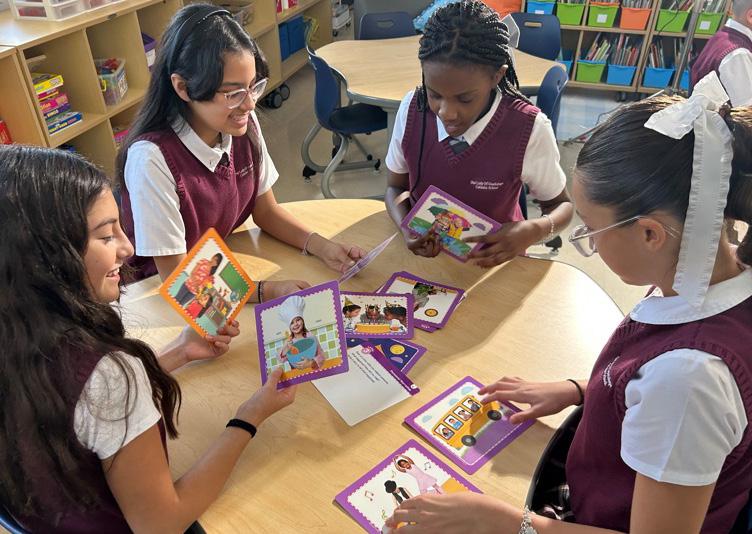
FOTO CORTESÍA DE OUR LADY OF GUADALUPE SCHOOL Las Cuentas de Libertad Educativa de Texas estarán disponibles para los padres en el año escolar 2026-2027.
SEXUAL DEL CLERO
En un continuo esfuerzo por facilitar atención pastoral a las victimas de abuso sexual del clero o del personal de la Iglesia, el Arzobispo Joe Vásquez gustaría recordar a los fieles de la Arquidiócesis la disponibilidad del Coordinador de Ayuda a Víctimas. Si alguien ha sido victim de abuso sexual del clero o del personal de la Iglesia, se les anima llamar a la Diane Vines al 713-654-5799. Por favor rece por la sanación de las víctimas del abuso y por todos los que sufren de alguna manera.
(OSV News) — As the use of artificial intelligence accelerates, the Catholic Media Association (CMA) is calling for its members to adopt a holistic, moral approach — one rooted in Catholic teaching — regarding AI.
“One of the values at the heart of Catholic media is a concern for human dignity, and so Catholic journalists should be at the forefront of thinking about how we integrate AI technology, which has the potential to undermine that dignity, whether through replacing human work or feeding false narratives,” Kerry Weber, president of the CMA, said.
Founded in 1911 as the Catholic Press Association, the CMA serves Catholic communications professionals and platforms throughout the U.S. and Canada. The Texas Catholic Herald is a longtime member of the CMA, with two members of the Archdiocese of GalvestonHouston’s Office of Communications contributing to the new guidance on AI, including Sean O’Driscoll, Archdiocesan senior communications manager, who served on the AI committee responsible for drafting the guidelines, and James Ramos, TCH content editor and vice president of the CMA, also serving on the board of directors as southern regional representative.
Weber noted that Pope Leo XIV “has expressed concern about the potential for AI to take away meaningful jobs from humans,” adding that “Catholic media is not exempt from this threat.”
She said that the CMA’s AI committee “has worked really hard to collect concerns from our members, to offer some cautions, but also to be encouraging in its recommendations, which are now published in a new section of the CMA Fair Publishing Practices Code.”
That effort comes as more media outlets clarify their protocols for the use of AI. The New York Times, for example, states that it does not use AI to write articles or to manipulate photos or

headlines, summaries and translations; and to recommend articles to online readers.
The CMA’s AI guidelines acknowledge that AI stands to “increase efficiencies” in news gathering, translations, transcriptions, data analysis and audience engagement. But, Weber stressed, “the core of our use must be based in transparency and critical thinking.
“Publications should let readers or viewers know how they will and won’t use AI, and as journalists, we should not trust that everything AI produces is infallible,” she said.
The CMA’s guidelines note the presence of AI in the media environment raises concerns regarding possible misinformation, privacy in data collection, the rights of minors and vulnerable adults, and threats to intellectual property rights and copyright.
significant cuts in newsroom and media jobs,” while at the same time standing to introduce “content-generation biases” that can be “driven at times by economic and not humanistic motivations.”
“AI can limit contextualization of the data and lacks human intuition, judgment, empathy and ethical responsibility as well as journalistic commitments to accuracy and fulsome reporting,” said the CMA in its guidelines.
The organization pointed to “Antiqua et Nova” (“Old and New”), the Vatican’s January 2025 doctrinal note on the relationship between AI and human intelligence.
“Most importantly, moral agency must be considered as primary, with responsibility and accountability for AI’s design, deployment and usage at every stage resting solely with humans and not automated systems,” said the CMA in its AI guidelines.
Along with publishing its general AI usage guidelines, the CMA specifically called for Catholic communicators to “clearly disclose when AI is used in generating editorial or creative content,” whether in text or multimedia format, with “humans, not computer algorithms,” supervising and fact-checking before release of such content to the public.
The organization also stressed the need for Catholic communicators to systematically review AI content, and to “remain aware of the danger of inherent bias, stereotyping or data manipulation” in Large Language Models, advanced AI systems that generate human language through exposure to vast amounts of existing data.
AI-generated content that infringes on copyright or plagiarizes original work should be shunned, as should distribution of “any AI-generated image or audio suspected or proven to be false or misleading depictions of reality,” with vetting undertaken through “robust chains of custody,” said the CMA.
The CMA cautioned Catholic communicators to “protect the sensitive or identifying information or data about users — especially minors and vulnerable adults — when entering data into any public generative AI tools.”
“Approaching the usage of AI thoughtfully and deliberately is a good thing,” said Weber. “Thinking carefully about how we integrate its usage and where it can help or hurt us — in terms of both our work and our humanity — is going to be crucial as we move forward.”

And, the CMA notes, the automation made possible by AI could lead “to
Drawing on Catholic social teaching — which articulates the mission of building a just society and living out holiness in modern society — the note stated that ethical AI practices should be grounded in human dignity, the common good, solidarity and interdependence, and the
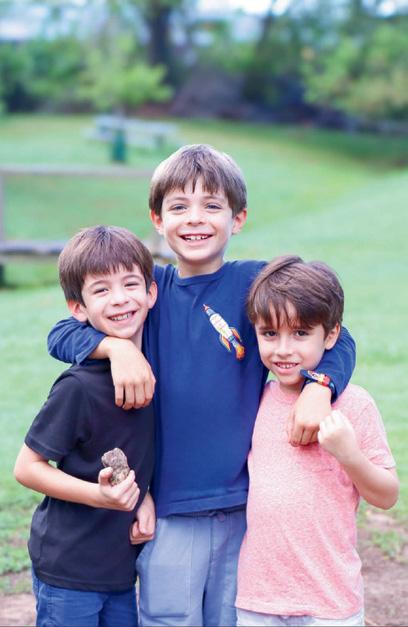
And, she added, “It does not mean we are scared or even dislike AI technology, but rather that we can hopefully be in control of how it becomes a part of our lives.”



For the latest updates about listings in the Around the Archdiocese, contact event organizers and visit www.archgh.org/ata.
NOV. 14
PRESENTATION, 6:30 to 8 p.m., Holy Name Retreat Center (430 Bunker Hill Rd., Houston). Flavie Romay, Passionist spiritual direction program director, explores spiritual direction and how it nurtures a deeper relationship with God. holynameretreatcenter.com/spiritualdirection-event.
GAME NIGHT, 7 to 10 p.m., St. Francis of Assisi (5102 Dabney St., Houston). Ten Bingo games. Tickets: $20 presale; $25 at the door. ewagnerw@gmail.com.
NOV. 15
DINNER, 6 p.m., The Revaire (7122 Old Katy Rd., Houston). Honoring Daniel Cardinal DiNardo, Catholic Charities of the Archdiocese of Galveston-Houston hosts a wine dinner with four gourmet courses with Italian wines. Tickets: $500; tables and sponsorships start at $5,000. nrivera@catholiccharities.org; 713-8746629. catholiccharities.org/wineanddine.
MASSES, St. Anne (2140 Westheimer Rd., Houston). St. Anne Parish centennial homecoming Masses honor a group or a Sacrament, followed by a reception. Saturday at 5:15 p.m. - For anyone who married at St. Anne; Sunday at 7:30 a.m. - For anyone who received Baptism, Reconciliation, First Communion, Confirmation and/or Holy Orders at St. Anne; 9 a.m. - St. Anne School alumni; 11 a.m. - St. Anne Liturgical ministries; 12:45 p.m. - St. Anne Hispanic ministries; 5 p.m. - St. Anne RCIA/OCIA. 713-526-3276; saintanne.org/news-events/680centennial-anniversary.
MARKET, Saturday, 10 a.m. to 7 p.m., and Sunday, 8 a.m. to 1 p.m., St. Michael the Archangel (1801 Sage Rd., Houston). CDA Court Queen of All Apostles #2258 hosts a market with 40 vendors, silent auction, “Buy Now” options and 40-item raffle. Free entry. gtrejsek@att.net.
BAZAAR, Saturday noon to 6 p.m., and Sunday, 11 a.m. to 7 p.m., Our Lady Star of the Sea (1401 Fidelity St., Houston). Bazaar with Bingo from 1 to 5 p.m. Saturday, and live music from 3 to 6 p.m. Sunday with Step Rideau & Zydeco Outlaws. Food includes boudin, gumbo, barbecue dinners, sweets, brisket, chicken, sausage and fried chicken wings. Cost: $5 admission fee on Sunday. 713-674-9206.
NOV. 16
• Accounts Receivable/Cash Applications Coordinator
• Director for Special Youth Services
• System Administrator II
• Liturgy Coordinator
• Associate Director Liturgical Formation
• Campus Ministers and more Parishes
• Openings in Music Ministry, Facilities, Technology, Faith Formation and more

BAZAAR, 10:30 a.m., St. Wenceslaus (407 Third St., Beasley). Event includes pastries, silent auction, music and raffle. Food available for dine-in and drive-thru. lynnellstieber@att.net; 281-451-6492.
NOV. 19
MASS AND PRESENTATION, 8:30 a.m. to noon, St. Paul the Apostle (18223 Point Lookout Dr., Nassau Bay). Bay Area Deanery Council of Catholic Women host a Mass, followed by breakfast snacks, raffle and presentation by Kristine Kerlin, director of Office of Aging on “The Journey Home: Preparing for Heaven with Peace and Purpose.”
NOV. 20
MARKET, 1 to 7 p.m., St. Laurence Ave Maria Center (3103 Sweetwater Blvd., Sugar Land). The Shop ‘til U Drop Charity Holiday Market with 60-plus vendors selling gifts, home décor, toys, jewelry and food with silent auction, door prizes, food, drinks and desserts for purchase. Free entry. 713-516-2042; ladyntx4937@gmail.com.
NOV. 23
PILGRIMAGE, 12:30 p.m., St. Mary Cathedral Basilica (2011 Church St., Galveston). A young adult Jubilee pilgrimage hosted by the Young Adults and Campus Ministry Office closes out the Jubilee Year with 12:30 p.m. Mass, lunch and beach trip. RSVP by Nov. 20 at archgh.org/yapilgrimage.
NOV. 22
ST. CHARBEL MASS, 10:30 a.m., Co-Cathedral of the Sacred Heart (1111 St. Joseph Pkwy., Houston). Event unites Catholics from Eastern and Western traditions to celebrate St. Charbel Mahklouf, the first Maronite saint inscribed on the Latin rite calendar. A special relic will be present. Reception follows. ourladyofthecedars.net
NOV. 23
MARKET, 8:30 a.m. to 2:30 p.m., Blessed Sacrament (4015 Sherman St., Houston). Market with 20-plus vendors and crafters, with breakfast and snacks for sale. Free entry. ladiesauxiliary7230@yahoo.com; 713-224-5291.
DEC. 3
ADORATION HOUR, 7 to 8 p.m., Sacred Heart (507 S Fourth St., Richmond). Adoration Hour on the first Wednesday of the month prays for vocations with Confession and Anointing of the Sick available.
DEC. 5-6
BAZAAR AND LUNCHEON, 9:30 a.m. to 4 p.m., Mary Queen (606 Cedarwood Dr., Friendswood). Market with 55 exhibitors selling handcrafted specialty items: quilts, paintings, stained glass, jewelry, ceramics, wreaths and gourmet dips. Lunch served from 11 a.m. to 2 p.m. Free entry. alicemalek@comcast.net; 281-814-2617.
DEC. 8-9
PARISH MISSION, St. Angela Merici (9009 Sienna Ranch Rd., Missouri City). Parish Advent mission with Vincentian Father Ron Hoye on Dec. 8 and 9. Mass and mission on Dec. 8 from 7 p.m. to 8:30 p.m. and talk on Dec. 9 at 7 p.m. Father Hoye will also preach at all weekend Masses.
DEC. 9
PRAYER SERVICE, 11 a.m., Mother of Perpetual Help Retreat Center (3417 W Little York Rd., Houston). Marian Servants of the Incarnate Wisdom hosts Marian consecration. info@ marianservantshouston.org; 832-322-4541.
MASS AND LUNCHEON, 9:30 a.m., St. Mary’s Seminary (9845 Memorial Dr., Houston). Archdiocesan Council of Catholic Women hosts annual Advent Mass, celebrated by Auxiliary Bishop Italo Dell’Oro, CRS, at 11 a.m. followed by a luncheon honoring and supporting Archdiocesan port ministries. ghcw.org; ghaccwboard@gmail.com.
For additional listings, visit WWW.ARCHGH.ORG/ATA
Having an Event?
Share your event with thousands of print and digital readers. Scan the QR code or submit events online at ARCHGH.ORG/ATA .

HOUSTON — On Sept. 23, St. John Vianney Catholic Church celebrated the blessing and dedication of its new Caritas Center. Located at 14795 Memorial Dr in Houston, at the corner of the parish’s campus, the center is designed to serve as a hub of outreach, compassion, and support for both the parish and the broader community.
Just days later, on Oct. 4, the parish held the grand opening of the newly expanded Joseph’s Coat resale store. What began in 1987 as a “cramped closet” has grown into a boutique-style ministry serving those in need with dignity and care.
For more information, including hours and donation lists, visit www. stjohnvianney.org/ministries/socialservices/josephs-coat-resale-shop/. †
PHOTOS COURTESY OF ST. JOHN
St. John Vianney Catholic Church’s new Caritas Center and the newly expanded Joseph’s Coat resale store are located at 14795 Memorial Dr., Houston.




November 23: Solemnity of Our Lord Jesus Christ, King of the Universe
November 30: First Sunday of Advent
December 7: Second Sunday of Advent
December 14: Third Sunday of Advent
December 21: Fourth Sunday of Advent archgh.org







THURSDA Y, DECEMBER 4 , 202 5 | 7PM



THE ADMISSIONS APPLIC ATION DEADL INE IS JANUARY 15, 202 6
At Strake Jesuit, we have been successfully building Men for Others for over 60 years. A key to that success is the Jesuit ideal of cura personalis — the care for the individual.
This core value translates into a personal care and attention for each Jesuit student. It also means that we concern ourselves with the education of the whole person. Students at Jesuit learn much more than math and science — they learn about community service, about their faith, and about their responsibilities to the world around them.
At Strake Jesuit College Preparatory, we do much more than prepare our students for college — we prepare them for life as men of God and Men for Others. Learn all about Strake Jesuit at our annual Open House. Don’t miss your chance to get a tour of the campus, hear from school leaders, learn about life at Jesuit from the student perspective, ask questions about your favorite subjects or extra-curricular activities, and more! To register or to learn more, visit www.strakejesuit.org/openhouse
